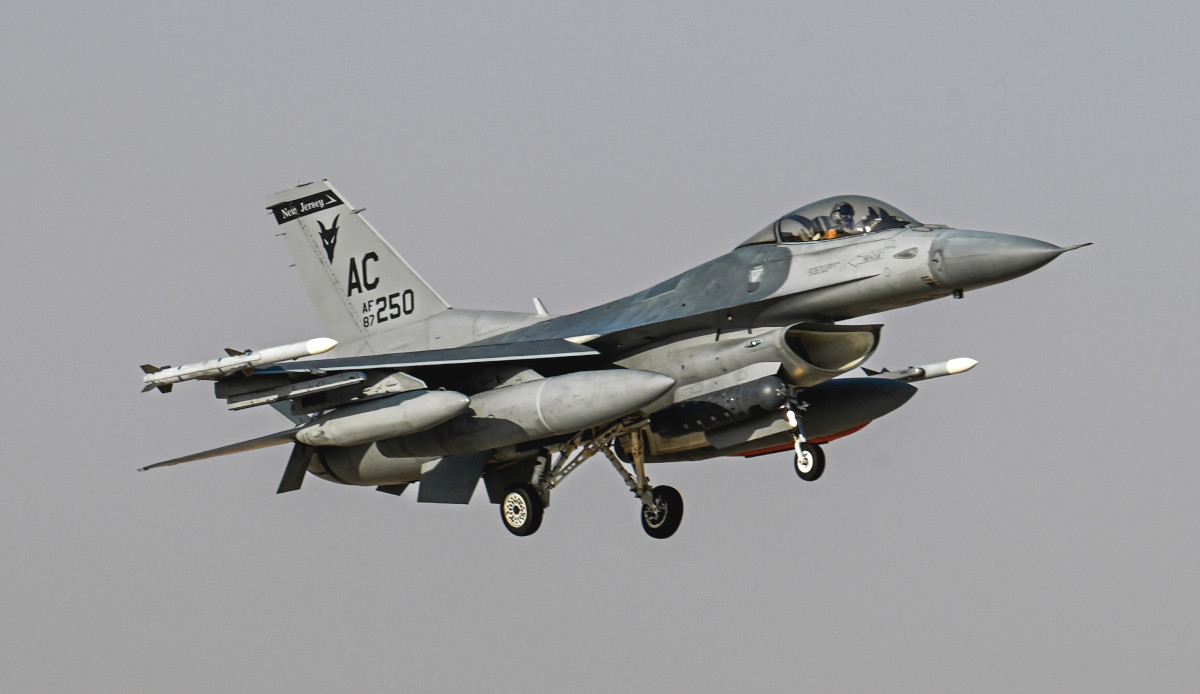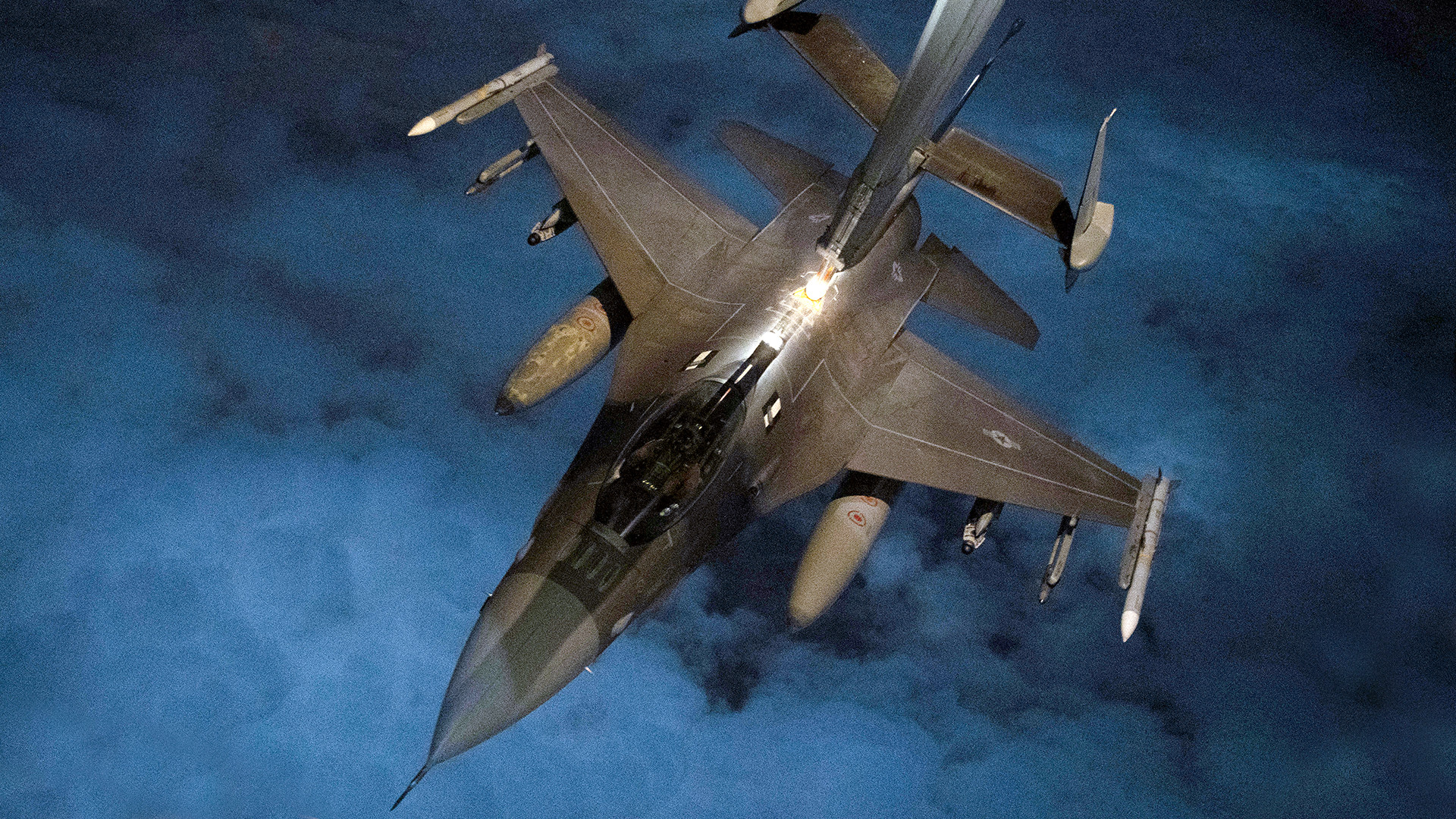The Pentagon says it has struck two facilities in Syria associated with Iran’s Islamic Revolutionary Guard Corps and other Iranian-backed groups. Described as “self-defense strikes,” this action was taken in retaliation for a recent spate of attacks on U.S. forces in Iraq and Syria. This comes amid concerns the ongoing Israel-Gaza conflict could spill over into a regional war, but the U.S. military says these strikes should not be seen as related to that crisis.
U.S. Secretary of Defense Lloyd Austin issued a statement late tonight about the strikes, but did not say where they had occurred, what was targeted specifically, or what American assets had been used to carry them out. Fox News has reported that a mixture of U.S. Air Force F-15E Strike Eagle and F-16 Viper jets were employed.
The U.S. military has sent a carrier strike group (and has another one on the way), as well as multiple squadrons of combat jets, among other forces, to the region to bolster its capacity to respond to any contingency that might erupt in recent weeks.

Austin’s full statement is as follows:
“Today, at President Biden’s direction, U.S. military forces conducted self-defense strikes on two facilities in eastern Syria used by Iran’s Islamic Revolutionary Guard Corps (IRGC) and affiliated groups. These precision self-defense strikes are a response to a series of ongoing and mostly unsuccessful attacks against U.S. personnel in Iraq and Syria by Iranian-backed militia groups that began on October 17. As a result of these attacks, one U.S. citizen contractor died from a cardiac incident while sheltering in place; 21 U.S. personnel suffered from minor injuries, but all have since returned to duty. The President has no higher priority than the safety of U.S. personnel, and he directed today’s action to make clear that the United States will not tolerate such attacks and will defend itself, its personnel, and its interests.”
“The United States does not seek conflict and has no intention nor desire to engage in further hostilities, but these Iranian-backed attacks against U.S. forces are unacceptable and must stop. Iran wants to hide its hand and deny its role in these attacks against our forces. We will not let them. If attacks by Iran’s proxies against U.S. forces continue, we will not hesitate to take further necessary measures to protect our people.”
“These narrowly tailored strikes in self-defense were intended solely to protect and defend U.S. personnel in Iraq and Syria. They are separate and distinct from the ongoing conflict between Israel and Hamas, and do not constitute a shift in our approach to the Israel-Hamas conflict. We continue to urge all state and non-state entities not to take action that would escalate into a broader regional conflict.”
These are the first U.S. strikes in the region since Iranian-backed Hamas launched its unprecedented attacks on southern Israel on October 7.
This also follows the U.S. Navy’s Arleigh Burke class destroyer USS Carney shooting down four land-attack cruise missiles and 19 drones launched by Iranian-supported Houthi militants in Yemen on October 19. Those missiles and drones were heading north over the Red Sea when they were engaged and were likely bound for Israel.

“My warning to the Ayatollah [Iran’s Supreme Leader Ayatollah Ali Khamenei] was that if they continued to move against those troops, we will respond and he should be prepared,” U.S. President Joe Biden said just yesterday at a press conference at the White House. “It has nothing to do with Israel.”
Since the Hamas attacks and the ensuing crisis began there have been persistent concerns that the situation could grow into a regional conflict. Lebanese militant group Hezbollah, another Iranian-backed organization in the region that is particularly well armed, has also been launching growing attacks on targets in Israel for weeks now.
Further underscoring concerns about possible spillover, what appears to have been a missile hit the Egyptian resort town of Taba on the Gulf of Aqaba overnight, injuring at least six people, according to local reports. Details about the incident are still limited, but Taba is very close to the Israeli border and that country’s port city of Eilat.
Though the origin of whatever hit Taba is still unclear, Hamas claimed to have targeted Eilat on Wednesday, but Israeli authorities said the strike missed its mark. There is also the possibility that Taba may have been hit by an errant Houthi missile or drone.
The U.S. government is clearly pushing to demonstrate its willingness to respond in kind to continued provocations in the region, but also keep this separate from the Israel-Gaza crisis. Regardless, the strikes on Iranian-linked targets in Syria still highlight fears about the potential for a broader conflict.
We will continue to update this story as more information becomes available.
UPDATE 11:50 PM EST:
A senior U.S. defense official speaker to reporters tonight has now disclosed that the strikes were carried out by U.S. Air Force F-16s only, rather than a mix of F-15Es and F-16s as Fox News had initially reported. The strikes were not coordinated in any way with Israel.
The jets struck weapons and ammunition storage facilities in Al Bukamal. This is a well-known hub for Iranian-linked groups situated in Syria just opposite the Iraqi border, and the U.S. military has carried out strikes there on multiple occasions in the past.
“We hit precisely what we aimed at,” the official said, according to VOA‘s Jeff Seldin, adding that the sites were selected because they were understood to be devoid of civilians. They would not, however, speak to any casualties that may have resulted from the strikes.
“We’ll let the dust settle,” they said. “There were people on the target at various points during the day. Again we know that they were not civilians.”
The senior U.S. defense official also confirmed that Iranian-linked groups had carried out three more attacks against U.S. forces in the region earlier in the day, bringing the total number of incidents since October 17 to 19. One of the attacks today was previously disclosed and targeted American personnel in Erbil, the capital of Iraq’s northern Kurdish autonomous region, but caused no casualties or damage. It is unclear where the other two occurred.
Beyond what was disclosed in the briefing, it is worth noting that these strikes on Al Bukamal only came after the deployment of additional U.S. Army air and missile defense elements earlier this week. These assets included a Terminal High Altitude Area Defense (THAAD) battery from Fort Bliss in Texas, Patriot surface-to-air missile batteries from Fort Sill in Oklahoma, and Avenger short-range air defense systems from Fort Liberty in North Carolina.
Howard Altman contributed to this story.
Contact the author: joe@thedrive.com
